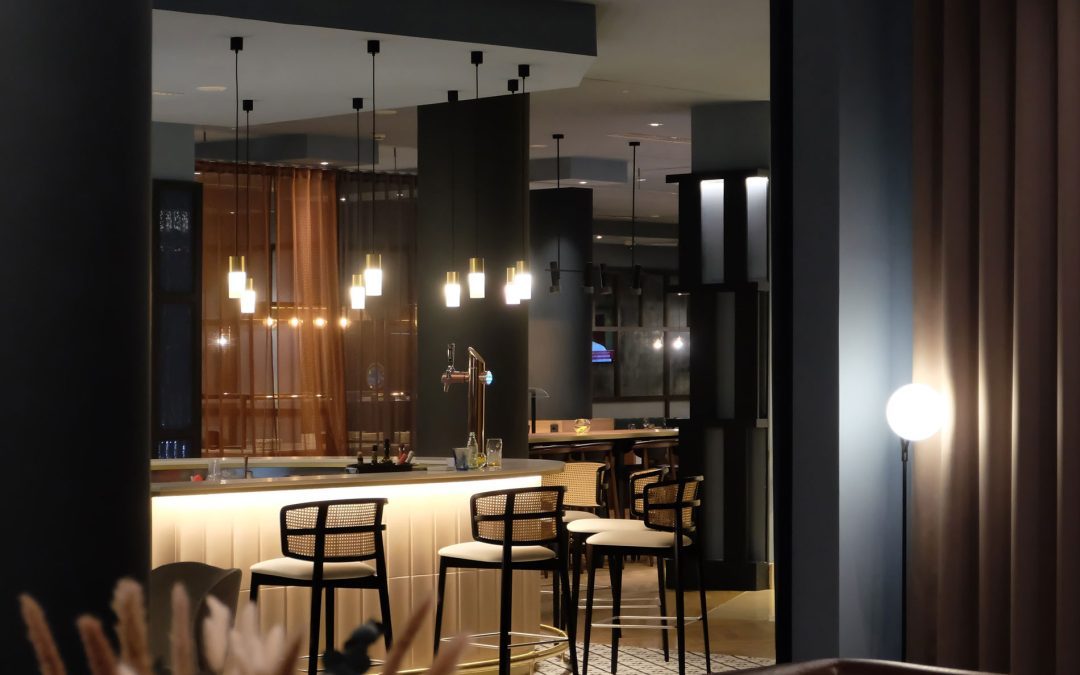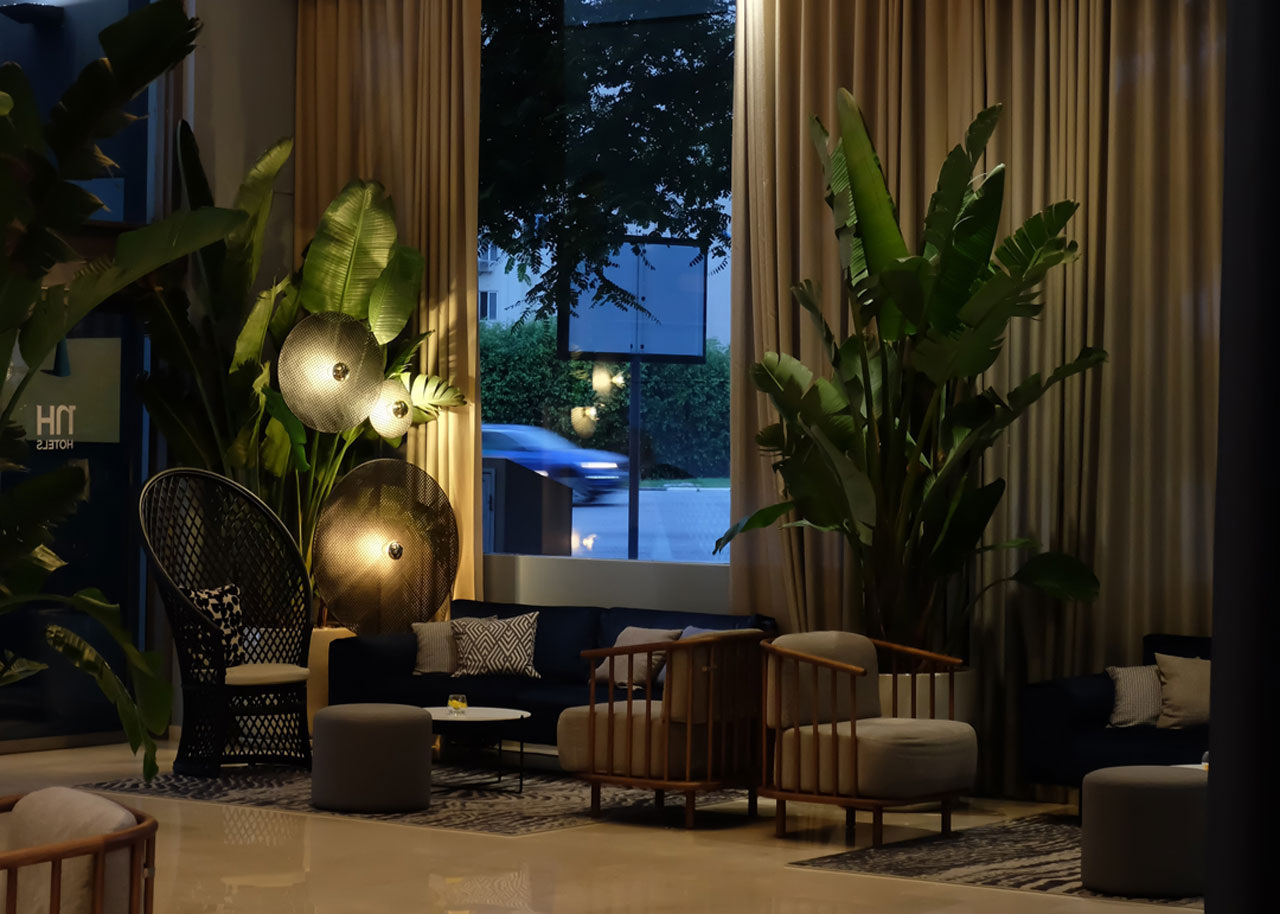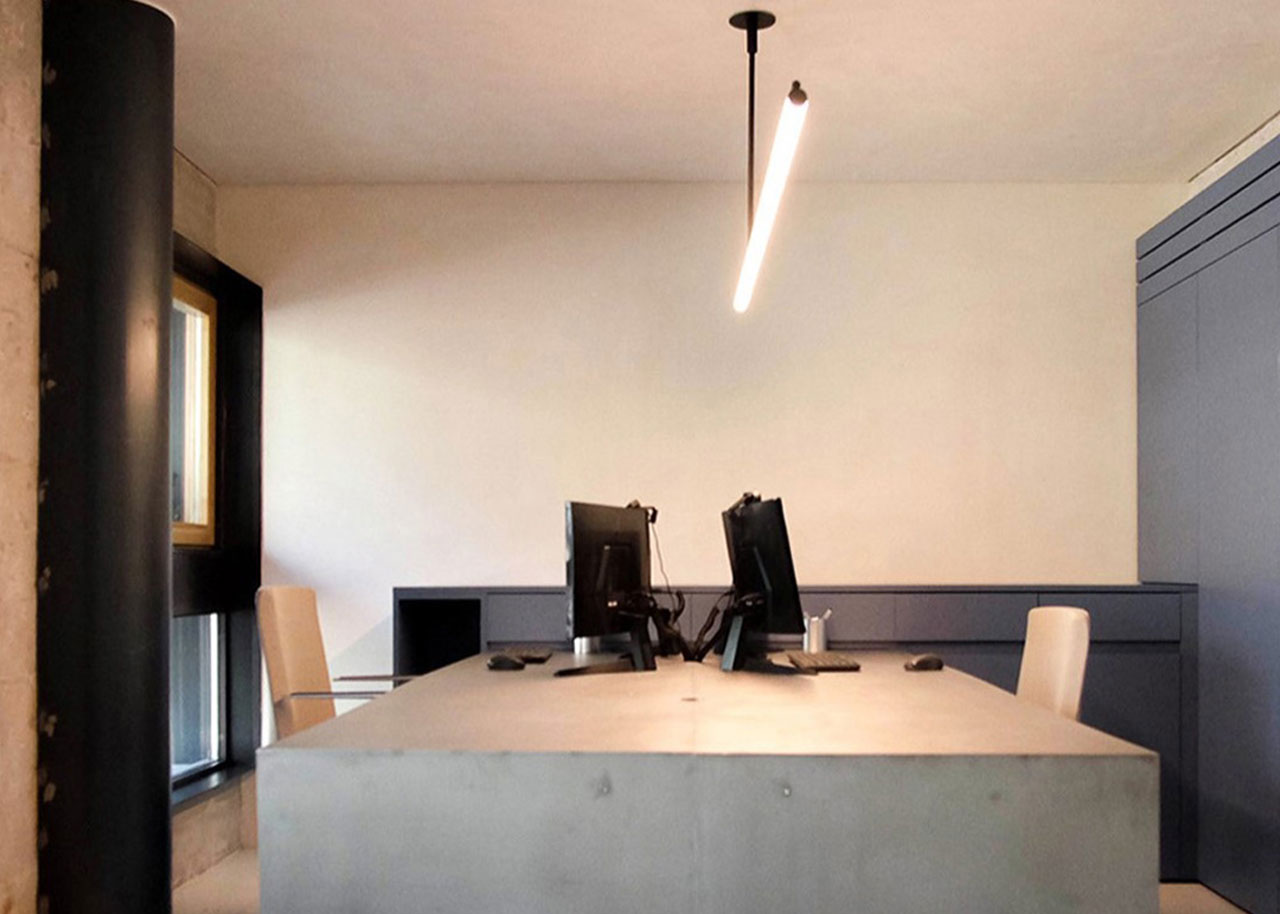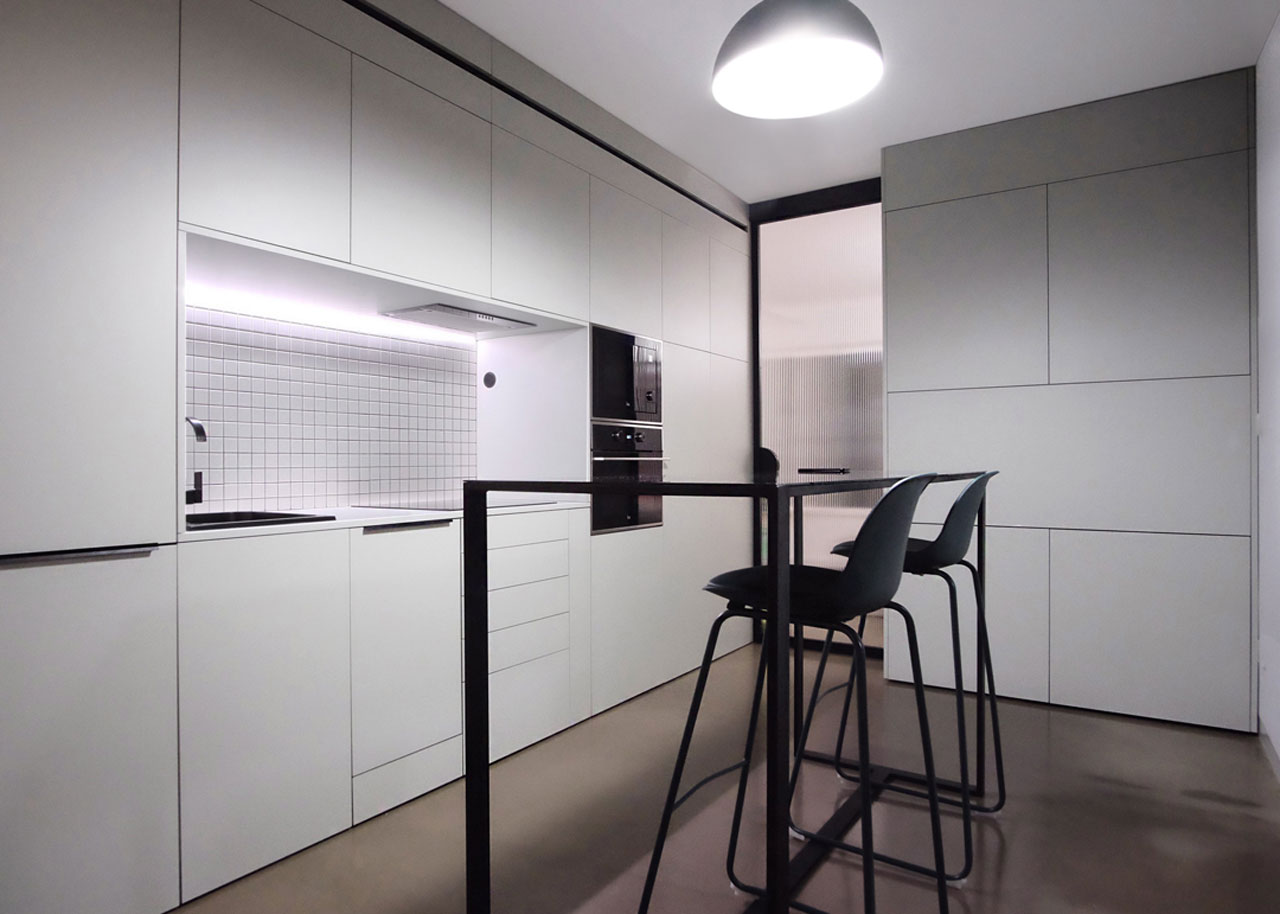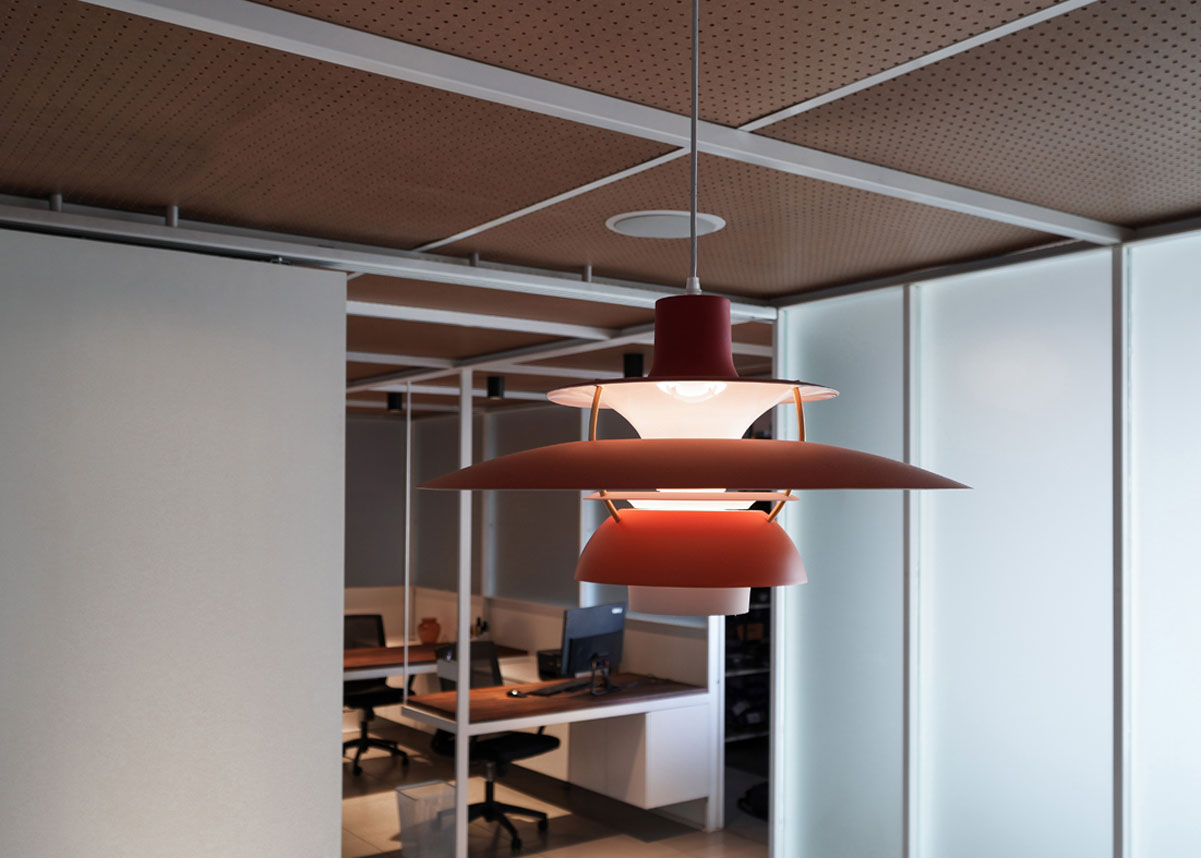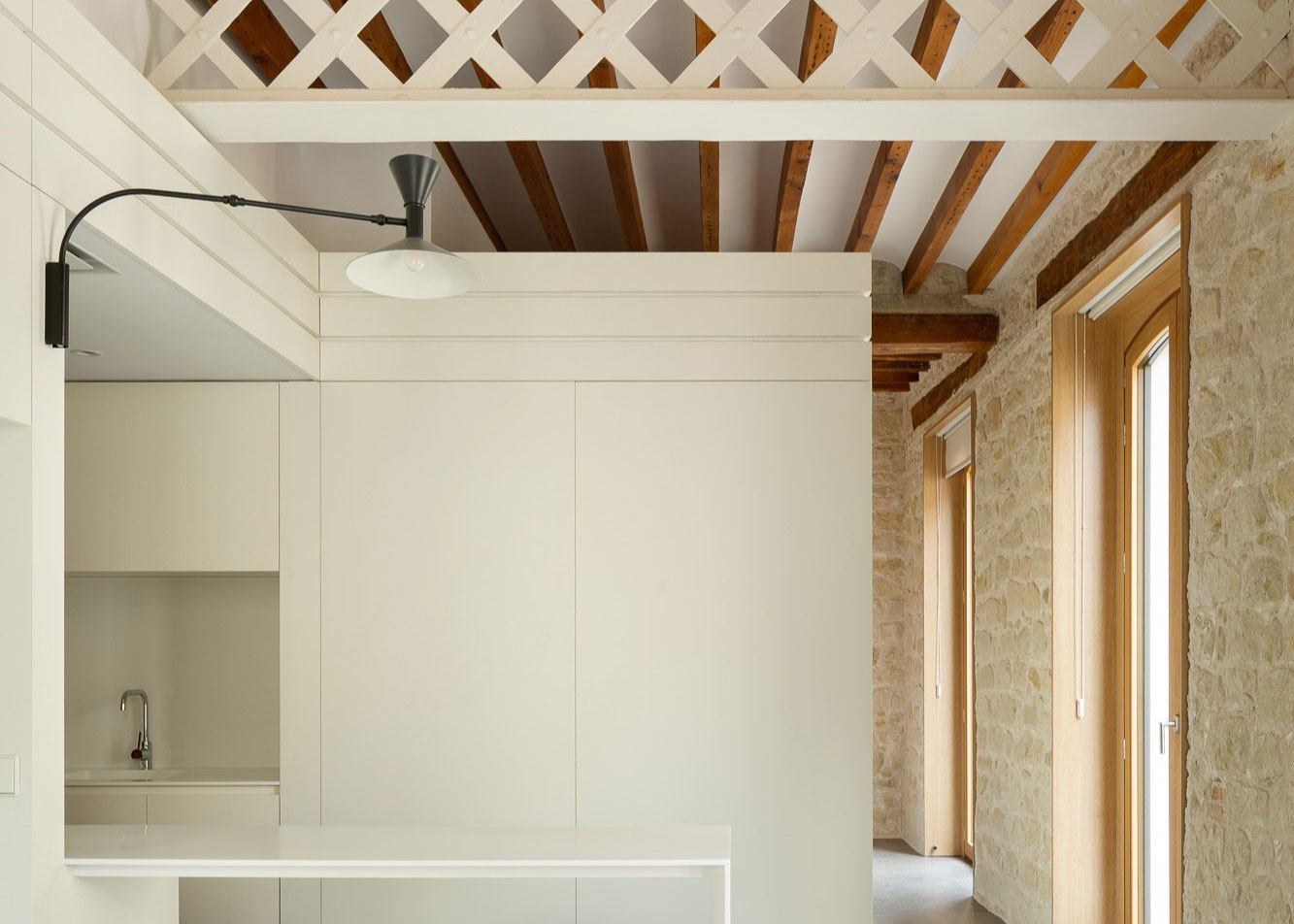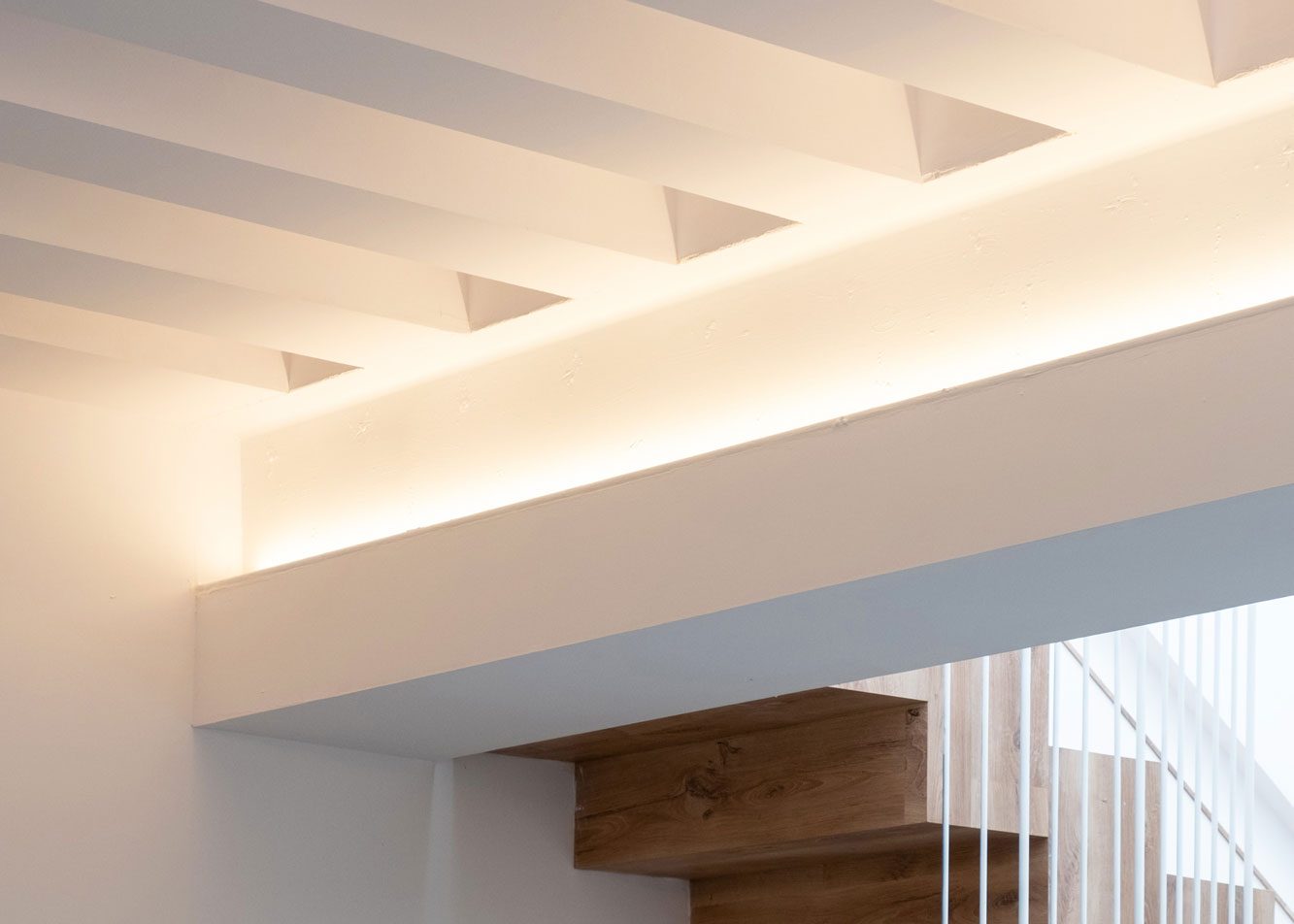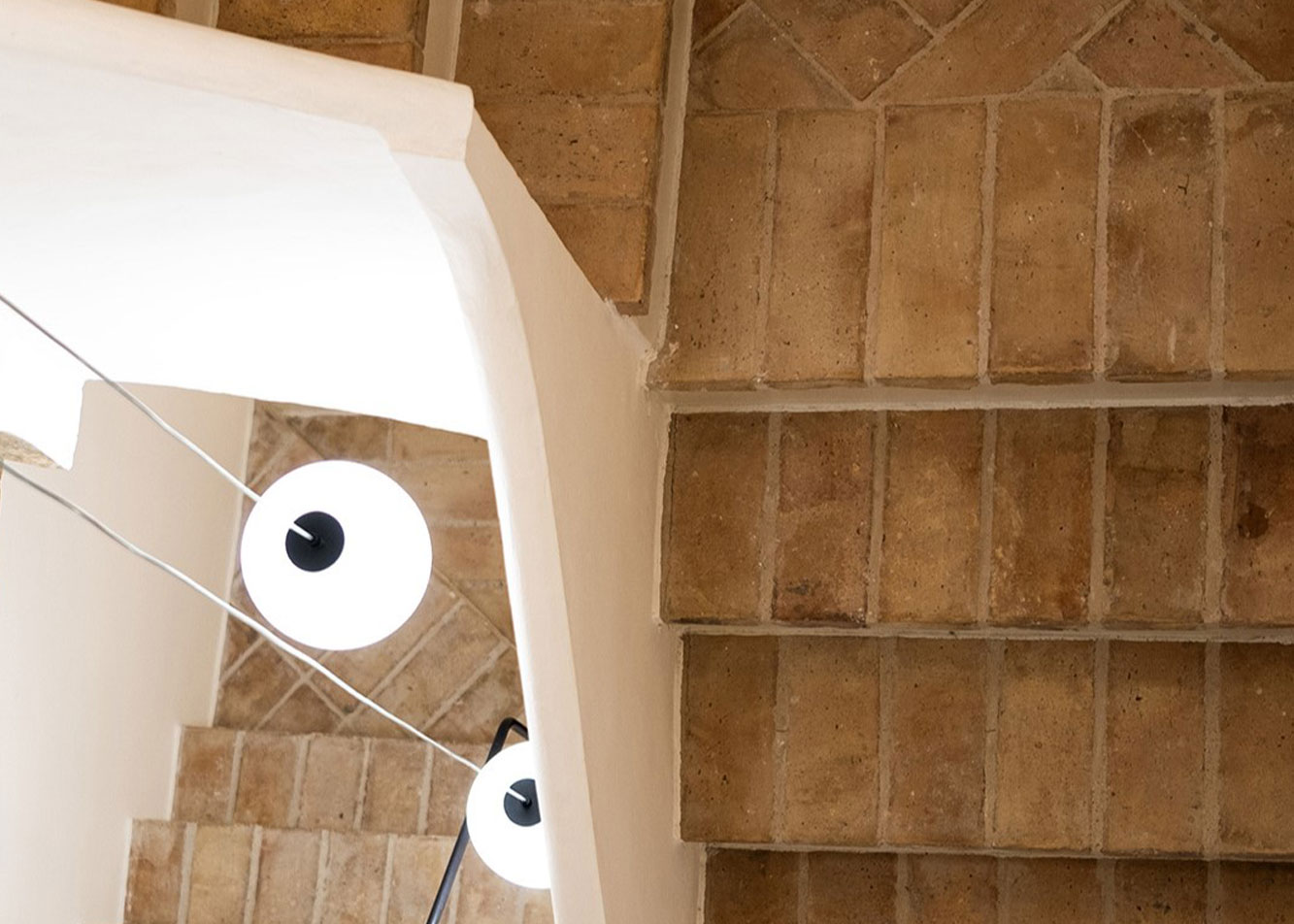Lighting is one of the most powerful and often underestimated aspects of a renovation. Not only does it allow us to see, but it is also capable of transforming a room, creating ambiances, highlighting textures and shaping volumes. Good lighting planning can turn a functional space into a welcoming, elegant place full of character. This guide is designed to help you understand how to use light strategically during a renovation, so that every corner of your home gains in value, functionality and aesthetics.
1. Choose the type of lighting
The first step to take to choose the best lighting in your reform, is to know what types of light there are, and how to get each of them.
- General or ambient lighting: this is the main light in a room, which ensures homogeneous visibility. It is usually achieved with ceiling lights, ceiling lamps or recessed spotlights.
- Spot or focal lighting: used to highlight specific areas, such as a countertop, a painting or a shelf. It is obtained with flexos or directional spots.
- Decorative lighting: its function is more aesthetic than practical. It is achieved through design lamps, hidden LED strips or sculptural luminaires.
2. Get the color temperature of the lighting right.
Another fundamental aspect that will facilitate the choice process, ensuring a better result, will be to know the different temperature ranges that exist in lighting, and how they influence the rooms.
- Warm light (2700-3000K): creates cozy atmospheres, perfect for living rooms, bedrooms, dining rooms.
- Neutral light (3500-4000K): provides a balance between warmth and brightness, very useful in kitchens, bathrooms, home offices.
- Cold light (5000-6000K): promotes concentration, essential for garages, laundries, technical work areas.
3. Choose a lighting aesthetic that gives your home personality.
Lighting fixtures not only serve a practical function; they also add decorative value and help define the style of the space. A well-chosen lamp can become a focal point and a key piece of interior design.
Some of the styles in trend are:
- Memphis: bright colors and bold shapes, ideal for creating spaces with personality.
- Industrial: marked geometries, metallic materials and robust aesthetics.
- Contemporary: clean lines and elegant finishes for a modern and sophisticated style.
- Minimalist: simple shapes and neutral tones for serene and refined spaces.
Investing in designer luminaires is an effective way to raise the aesthetic level of any renovation.
4. Avoid lighting mistakes that can ruin your renovation.
Complications can arise in the reform process:
- Poorly located light points (due to previous installations).
- Excess or lack of lighting in certain areas.
- Unpleasant shadows in work or reading areas.
For these cases, it is important to think flexibly. Some creative solutions can be:
- Use mobile luminaires (such as floor lamps or wall lights with extendable arm).
- Integrate indirect lighting with ceiling coves or furniture.
- Opt for adjustable technology (adjustable intensity and temperature) that adapts to different times of the day.
5. Follow these recommendations to get the perfect lighting
To close this guide, we share some keys that will help you get the most out of your space through lighting.
- Plan the lighting from the beginning of the renovation project, do not leave it to the end.
- Analyze how natural light enters each room and enhance it whenever possible.
- Think in layers: mix different types of light to create a dynamic and functional space.
- Avoid extremes: neither all cold light nor all warm light; adapt according to the use of the room.
- It includes dimmers to have more control over the environment.
- Don’t skimp on the quality of light fixtures and bulbs, as the investment translates into visual comfort and durability.
At Cronotopos, each project starts with a rigorous and thoughtful design process, where all decisions are made after a detailed study of the characteristics of the space. Lighting, far from being a secondary aspect, is an essential part of this analysis. It allows us to enhance the architecture, create unique environments and offer customized solutions, always adapted to the needs of each client and each environment.

